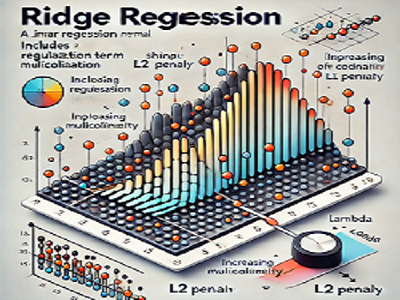
Exploratory Data Analysis (EDA) is a critical step in the data science process where a data scientist analyzes and investigates datasets to summarize their main characteristics, often using visual methods. It helps to understand the underlying structure of the data, detect patterns, spot anomalies, and check assumptions before applying any formal modeling techniques. EDA is essential for preparing data and choosing the right modeling approach.
Key Goals of EDA
- Understanding Data Distributions: Identifying the types of variables (categorical, continuous) and their distributions (e.g., normal, skewed).
- Identifying Patterns and Trends: Detecting relationships between variables, such as correlations or trends over time.
- Detecting Outliers and Anomalies: Finding unusual data points that could impact analysis or model performance.
- Checking for Missing Data: Understanding how much data is missing, if the missing data is random or systematic, and deciding how to handle it.
- Validating Assumptions: Checking assumptions like linearity, normality, or independence that may impact the choice of statistical models.
- Determining Feature Importance: Understanding which features (variables) might have the most significant impact on your outcome of interest.
Common EDA Techniques
- Descriptive Statistics:
- Measures of central tendency: Mean, median, mode.
- Measures of variability: Standard deviation, variance, range.
- Measures of shape: Skewness, kurtosis.
- Data Visualization:
- Histograms: Show the distribution of a single numeric variable.
- Box Plots: Help identify outliers and compare distributions.
- Scatter Plots: Visualize relationships between two continuous variables.
- Correlation Matrix: Displays the relationships between multiple numeric variables.
- Bar Plots and Pie Charts: For categorical data distribution.
- Heatmaps: Useful for visualizing correlation matrices or missing data patterns.
- Data Cleaning & Preparation:
- Handling missing data (e.g., imputation, deletion).
- Removing duplicates or irrelevant features.
- Normalizing or scaling data.
- Correlation Analysis:
- Using techniques like Pearson or Spearman correlation to understand how variables are related to each other.
- Feature Engineering:
- Creating new variables from existing ones to capture additional information or insights.
Importance of EDA
EDA ensures that the dataset is clean, the data quality is good, and any underlying patterns or potential biases are understood before applying more sophisticated machine learning or statistical models. It helps in avoiding incorrect assumptions, bad model performance, and misleading results.
In summary, EDA is a vital process for uncovering insights in the early stages of a data science project, guiding decision-making for the subsequent stages.



